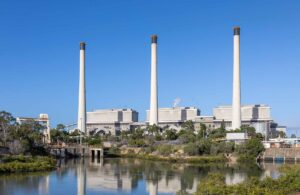Australia will continue to experience more extreme impacts of climate change, with the bushfire threat already exceeding the ‘worst case’ scenarios, experts have told the Australian National University’s 2022 Climate Update event.
The director of the ANU’s Institute for Climate, Energy and Disaster Solutions, Mark Howden, said that the observed impacts of climate change were indisputable evidence of the human effects on the environment.
“The human influence on the global climate is now unequivocal. Essentially, as a matter of fact, it’s not uncertain,” Howden said.
“We can put to bed a lot of that argument that it’s not human influence. It was clear that there was widespread rapid intensifying an unprecedented influence of humans on many different aspects of the climate system.”
Howden pointed to the worsening threat posed by the increasing severity of bushfires, no longer limited to Australia’s summer months, and now becoming a year-long issue.
“Across most of Australia, the fire danger index is increasing and increasing significantly, particularly in the southeast,” Howden said.
“Starting from spring and ending early in autumn, and we can see [the area burned] going up, essentially linearly. But if we look at the winter period, the autumn and winter period, the cool season, what we see is the area burnt is actually going up essentially exponentially.”
“There is no reason to feel comfortable about how fire is evolving at the moment. And this is beyond the worst-case climate change scenarios for this type at this time span, which were produced just a few years ago,” Howden added.
The latest Annual Climate Statement, recently published by the Bureau of Meteorology, found that while 2021 brought the coolest average temperatures for Australia since 2012, it still ranked amongst the top 20 hottest years on record at 0.56 °C warmer than the 1961–1990 average.
The lower temperatures are partially attributable to the ongoing influence of a La Niña event, which usually brings cooler and wetter periods to Australia’s east coast that can help spur the growth of vegetation, Howden said that it formed part of the El Niño–Southern Oscillation (ENSO) cycle that can amplify the bushfire risk when the warmer and drier periods return.
“A lot of our fire danger arises through our climate variability, which in large part is driven by El Niño,” Howden said.
“So that’s the difference between the wet years when we grow a lot of biomass and the dry years where that dries out and becomes an immediate fire risk.”
“We’re likely to see the rainfall variability associated with the ENSO cycle likely to increase. The difference between the wet years and the dry years in a place like Australia is likely to increase with a whole series of implications for droughts and floods and fires.”
Howden, who also serves as vice chair of the Intergovernmental Panel on Climate Change, said that he saw the government response to the Covid-19 pandemic, with linkages being made by policymakers between public health and economic health, as a potential model that could be replicated in response to climate change.
“In COVID, we very demonstrably showed that if you look after your people, you look after your economy, those countries which acted well and very proactively, in terms of COVID, also fared well, economically,” Howden said.
“And the same goes for climate change. If we don’t look after our people and environment, our economy will suffer. And it’s increasingly become clear across a whole range of studies.”
At the end of February, the Intergovernmental Panel on Climate Change will release its next landmark report on climate change, detailing the anticipated impacts of climate change, the vulnerability of natural systems, and options for adaptation measures.
It will follow last year’s IPCC report, which outlined the latest scientific understanding of the physical basis of climate change and detailed global warming projections.








